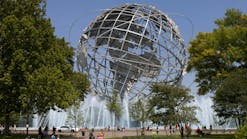Southern Florida has been hit by a red tide and a blue-green algae bloom, which has led to the death of marine life and beach closures across the coast. The red tide has plagued areas of the coast stretching from Sarasota to Marco Island since October 2017, and the blue-green algae bloom developed in June 2018 in Lake Okeechobee and has since spread to the freshwater portion of the Caloosahatchee River, as reported by Fort Myers News-Press.
This red tide, lasting nine months so far, is the longest red tide since a 2004 red tide lasted 17 months. Furthermore the current red tide is believed to be responsible for the majority of marine deaths, as thousands of fish have washed up dead on beaches and nearly 300 sea turtles have been found dead since January, according to the New York Times. In humans, the tides cause respiratory agitation, which has contributed to beach closures.
According to USA Today, it’s hard to predict how long the blooms will remain with some saying red tide can persist through 2019. Red tides can last days, weeks or months.
Red tide counts ranged from natural background levels to 1 million cells per liter or higher, which is well over the count when fish kills and breathing irritation for humans begin, according to USA Today. The Florida Fish and Wildlife Conservation Commission said those irritations and kills begin when counts reach 10,000 cells per liter.
On July 9, Florida Gov. Rick Scott declared a state of emergency in Lee, Glades, Hendry, Marin, Okeechobee, Palm Beach and St. Lucie counties to combat the blooms.
Furthermore, Gov. Scott allocated $700,000 from the state’s environmental agency to Lee County so the county officials can combat and remove blue green algae from various canals and tributaries along the Caloosahatchee River, according to USA Today. This money is reportedly part of a program started by the governor’s emergency declaration.
Water quality scientists believe that Hurricane Irma may have stirred up nutrients at the bottom of the Everglades drainage system that is contributing to this year’s massive algae blooms and red tide. Toxic algae thrives in stagnant, warm water rich in nutrients and may also be associated with high rainfall and fertilizer-rich storm water runoff from nearby citrus agriculture.






